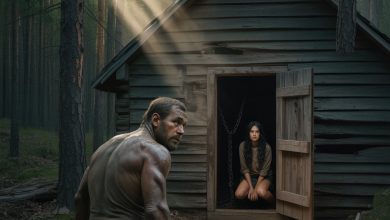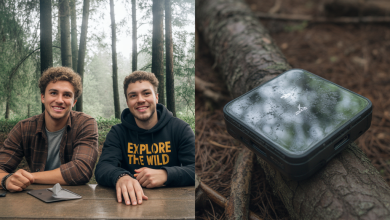They Vanished from a Beach in 1994. The Only Clue Was Just Found Miles Inland, Buried Under a Tree.
The forest remembers. For twenty-eight years, it held its secret with the quiet, patient tenacity of a root gripping stone. But in the late autumn of 2022, a brutal Pacific storm ripped through the Oregon coastline, and in its violent rearrangement of the landscape, it offered up a piece of a story that had long been surrendered to the realm of ghost tales and cold case files.
A park ranger named Dave Thompson, surveying the damage in the deep woods, found it: a vintage red and white Igloo cooler, impossibly tangled in the exposed root ball of a fallen, ancient tree, miles from the sea. It was the first and only clue in the heartbreaking 28-year-old mystery of the Peterson family.
On the cool, overcast morning of October 22, 1994, Greg Peterson, a solid, quiet man of 35, packed his two sons, nine-year-old Leo and six-year-old Sam, into the family’s dark green Ford Bronco. Their destination was a secluded, primordial cove known only to a handful of locals, a place Greg simply called “the spot.” His wife, Sarah, snapped a photo as they left—a father with his arms around his boys, all of them beaming with the promise of a day spent by the sea. It was the last picture ever taken of them.
The alarm was raised that evening when they failed to return home. A sheriff’s deputy found the Bronco, cold and silent, in the unmarked gravel turnout by the trailhead. It was empty. And it was locked.
What followed was a massive, multi-day search that yielded absolutely nothing. Search and rescue teams, the Coast Guard, and hundreds of volunteers combed every inch of the treacherous coastline. They found no footprints, no fishing rods, no scraps of clothing. It was as if the ocean, in a single, silent breath, had simply inhaled the father and his two sons from the face of the earth.
The official theory, the one favored by common sense, was a rogue wave—a sudden, massive surge of water that could have swept them from the rocks in an instant. But two stubborn, unsettling facts always worked against that simple, tragic narrative. First, the locked truck. Greg Peterson was a notoriously cautious man who had taught his sons to respect the ocean’s power. The act of walking back up the steep trail to methodically lock the vehicle seemed completely at odds with the chaos of a sudden, life-or-death struggle. It was the act of someone who fully intended to return.
Second, the ocean gave nothing back. In a region known for its violent surf, it was almost unheard of for a drowning or swept-away incident to leave no trace. A cooler, a tackle box, a life vest—something should have eventually washed ashore. But in the Peterson case, nothing ever did. The void of evidence was so absolute it was unnerving.
For 28 years, the story remained frozen in this state of perfect, impenetrable mystery. The case went cold. The world moved on. Until Ranger Thompson, standing on the trunk of that fallen tree, stared at the impossible clue the storm had unearthed. The cooler was not just found inland; it was discovered over half a mile from the coast and nearly 200 feet above sea level, in a location that no known flood or tsunami could have reached. It had been buried deep in the earth, only to be exhumed by the tree’s uprooting.
When a forensics team carefully opened the time-ravaged container, the mystery only deepened. The seal had miraculously held. Inside, preserved in a slurry of dark, brackish mud, were two items. The first was Greg Peterson’s wallet, his driver’s license photo a ghostly echo from 1994. The second was a child’s crayon drawing, carefully laminated. On the back, in Greg’s neat handwriting, were the words: Sam’s first sea monster, October 22, 1994.
The discovery was a gut punch, an intimate and heartbreaking confirmation that this was indeed the family’s cooler, a time capsule from the last happy moments of their lives. But instead of providing answers, the impossible clue has only created more profound and bewildering questions. It obliterates the simple rogue wave theory. But it makes a foul play scenario even more bizarre. Why would a perpetrator, after committing a terrible act, carry a single cooler for miles into the dense woods and bury it deep in the earth?
The cooler, the one character to return from the void after 28 years, has only deepened the mystery. It tells us they were there. It tells us they were happy. And then it tells us nothing at all, leaving the fate of the Peterson family where it has always been—locked in the deep silence of the Oregon forest and the roar of the all-consuming sea.



